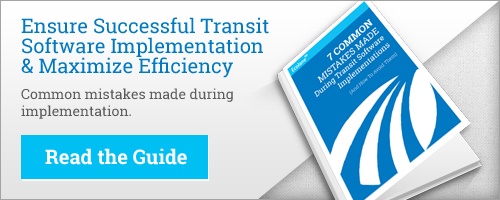With a rising trend of more people spending time working or living in urban areas, public transit use will also continue to rise. Of course, not every public transit system will rise at the same rate. Some transit operators will see a loss of ridership due to a variety of reasons that vary from person to person and system to system. There are a few common trends, however, that transit systems can use to gauge the quality of their services.
In a recent study at the University of California at Berkley, researchers discovered that commuters are more inclined to stop using public transit if they experience delays which can be blamed on the transit agency. (Most people will forgive other inconveniences such as traffic, emergencies or mechanical failures.)
Additionally, the study found that delays can occur at any time during a trip, and not just at the traditional point of departure. While this news might be someone disheartening, it can show transit agencies where they can eliminate rider-scaring policies such as having buses idle at green lights or pulled over to stick to a schedule or to prevent bus bunching.
Let's take a look at 7 Reasons Why People Stop Using Public Transit and some ways to manage the change.
- Delayed on-board due to traffic
Because traffic delays affect all drivers equally, passengers tend to forgive transit agencies for them. The impact of delays can be better managed by using transportation scheduling software.
- Delayed on-board due to emergency or mechanical failure
Emergencies and mechanical failures are unpredictable by nature, and most people understand this. Working to resolve the situation as quickly and professionally as possible is the goal, and using scheduling software to know when to service vehicles can come in handy.
- Experienced long wait at origin stop
At an origin stop, passengers can wait at home if they are provided with real-time arrival information through scheduling software.
- Missed trip due to wrong real-time information
Providing incorrect information looks unprofessional and passengers will recognize it pretty quickly because it throws schedules off. The right transportation scheduling software can get the right information to riders when they need it the most and head-off negative customer experiences.
- Passed up due to overcrowding
For a rider, being passed by an overcrowded bus is similar to that bus never existing in the first place. Overcrowded buses mean there is not enough buses to handle the load. Relieve this problem by using scheduling software to assess the right number of buses needed at any given time of day.
- Long waits at a transfer stop
Unlike at origin stops, riders are out of the elements if they experience long waits at transfer stops. At best, riders can use real-time information (provided by mature scheduling software) to better plan out their route. Of course they can only do this if they know the delay is coming.
- People delayed on board due to transit vehicles backed up or problems on the transit route further down the line.
By far, the top reason riders stop riding public transit is being stuck on a bus that has been delayed by other transit vehicles. If this is a common occurrence within an agency, it’s something which needs to be addressed. Using transportation scheduling software to better manage fleets, and building processes to communicate emergencies, breakdowns, and traffic congestions to passengers is worth the effort. Sharing updated arrival times to these riders will pay off in their appreciation and return business.
Operating at maximum efficiency and being open with riders while proactively working to stop delays is an attainable goal and an activity which can better manage the challenge of decreased ridership.
About the Author

Ecolane
Read Ecolane's blog articles for perspective, opinion and information on transit and paratransit issues.
%20(200%20x%20100%20px).png)


